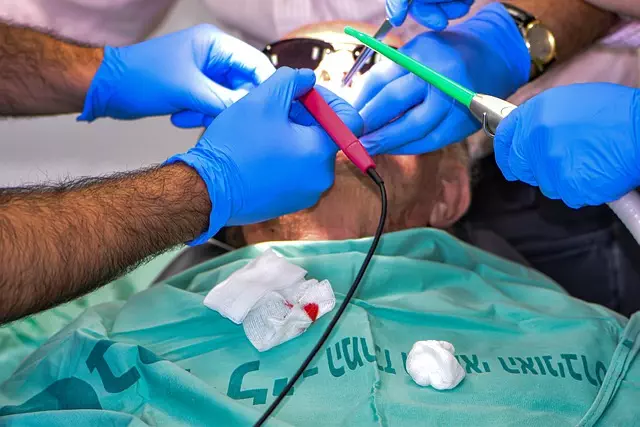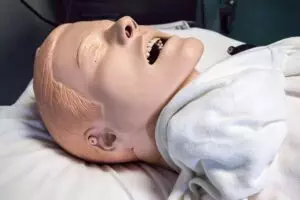The CoolSculpting Procedure is a non-invasive fat reduction technique using controlled cooling technology to target and eliminate stubborn fat cells without surgery. After an initial consultation, a gel pad and handheld device are used to freeze targeted areas like the abdomen, love handles, thighs, and buttocks, causing fat cell crystallization and eventual elimination by the body. With minimal pain and downtime, patients can quickly resume regular activities. Safety is crucial; patients should disclose medical history, and an experienced provider with accredited training and certification ensures effective results while minimizing risks and side effects.
“Discover the secrets to achieving a slimmer, safer CoolSculpting experience. This comprehensive guide delves into the non-invasive fat reduction procedure known as CoolSculpting. From understanding its mechanism to identifying ideal candidates and managing risks, we provide a step-by-step breakdown. Learn about safety measures, potential side effects, and the importance of choosing an accredited provider for effective yet secure results. Optimize your journey towards a sculpted figure with this authoritative overview of the CoolSculpting procedure.”
Understanding CoolSculpting: The Non-Invasive Fat Reduction Procedure

CoolSculpting is a non-invasive fat reduction procedure that has gained significant popularity in recent years as a safe and effective way to shed unwanted fat. This innovative treatment offers an alternative to surgical procedures, providing individuals with a comfortable and convenient option for achieving their desired figure. The process involves using controlled cooling technology to target and freeze specific fat cells, leading to their eventual elimination from the body.
During a CoolSculpting session, a gel pad is placed on the area to be treated, and a handpiece is applied. The handpiece delivers cold energy to the fat cells, causing them to crystallize and eventually die. This procedure is typically non-painful and can be performed on various areas of the body, including the abdomen, love handles, thighs, and buttocks. One of its key advantages is minimal downtime, allowing patients to return to their regular activities soon after the treatment.
How Does CoolSculpting Work? A Step-by-Step Guide

CoolSculpting is a non-invasive fat reduction procedure that uses controlled cooling to eliminate stubborn fat cells. The process begins with a consultation where a healthcare professional assesses your areas of concern and determines your eligibility for the treatment. During the actual CoolSculpting procedure, a gel pad is placed on the targeted area, which is then cooled to precise temperatures using a handheld device. This freezing process causes fat cells to crystallize, damaging them without affecting surrounding tissues.
After the cooling period, the body naturally processes and eliminates these damaged fat cells, leading to reduced fat in the treated area. Over the following weeks, as your body continues to eliminate the dead fat cells, you may notice a slimmer, more contoured appearance. It’s important to note that CoolSculpting is most effective for spot treatment of small areas, such as love handles or a bulge above the belly button, and may not be suitable for larger areas or significant weight loss.
Safety Measures and Precautions for CoolSculpting Treatments

CoolSculpting is a non-invasive fat reduction procedure that has gained popularity for its effectiveness and minimal downtime. However, like any medical treatment, it’s crucial to understand the safety measures and precautions involved. Before undergoing CoolSculpting, patients should discuss their medical history with their provider, as certain conditions or medications may affect treatment suitability. The practitioner will assess each patient individually to ensure the best results and minimize potential risks.
During the procedure, specialized devices are used to target and freeze fat cells. While generally safe, there may be temporary side effects like numbness, swelling, or discomfort in the treated area. These usually subside within a few days. To enhance comfort and safety, patients should follow post-treatment instructions, including staying hydrated, avoiding strenuous activity in the treated region for a period recommended by their provider, and monitoring any unusual symptoms. Regular check-ins with the healthcare professional are also advisable to ensure a smooth recovery process.
Candidate Eligibility: Who is a Good Fit for CoolSculpting?

Potential Risks and Side Effects: What to Expect During and After Treatment

CoolSculpting is generally considered safe, but like any procedure, it’s not without potential risks and side effects. Some common temporary issues include redness, swelling, and numbness at the treatment site. These usually subside within a few days to a week. More serious, though rare, side effects may include tissue death (necrosis) or skin damage, which can lead to scarring.
It’s important to choose an experienced provider who follows proper protocol to minimize these risks. During and after treatment, patients should expect cold sensitivity and potential discomfort as the fat cells are being frozen. Post-treatment care, including staying hydrated, avoiding strenuous activity, and applying ice, is crucial to promote healing and reduce swelling.
Choosing an Accredited Provider: Ensuring Safe CoolSculpting Practices

When considering a CoolSculpting procedure, choosing an accredited provider is non-negotiable for ensuring safe practices. Look for professionals who have received proper training and certification from reputable organizations recognized in the medical field. This accreditation ensures they follow evidence-based methods and adhere to strict safety protocols. Additionally, ask about their experience with the CoolSculpting technology and specific training they’ve undergone.
Accredited providers maintain up-to-date knowledge of the latest advancements in CoolSculpting procedures, allowing them to offer personalized treatments tailored to your needs. They also have access to resources for managing any adverse effects or complications that may arise during or after the procedure, providing peace of mind throughout your journey towards fat reduction.
